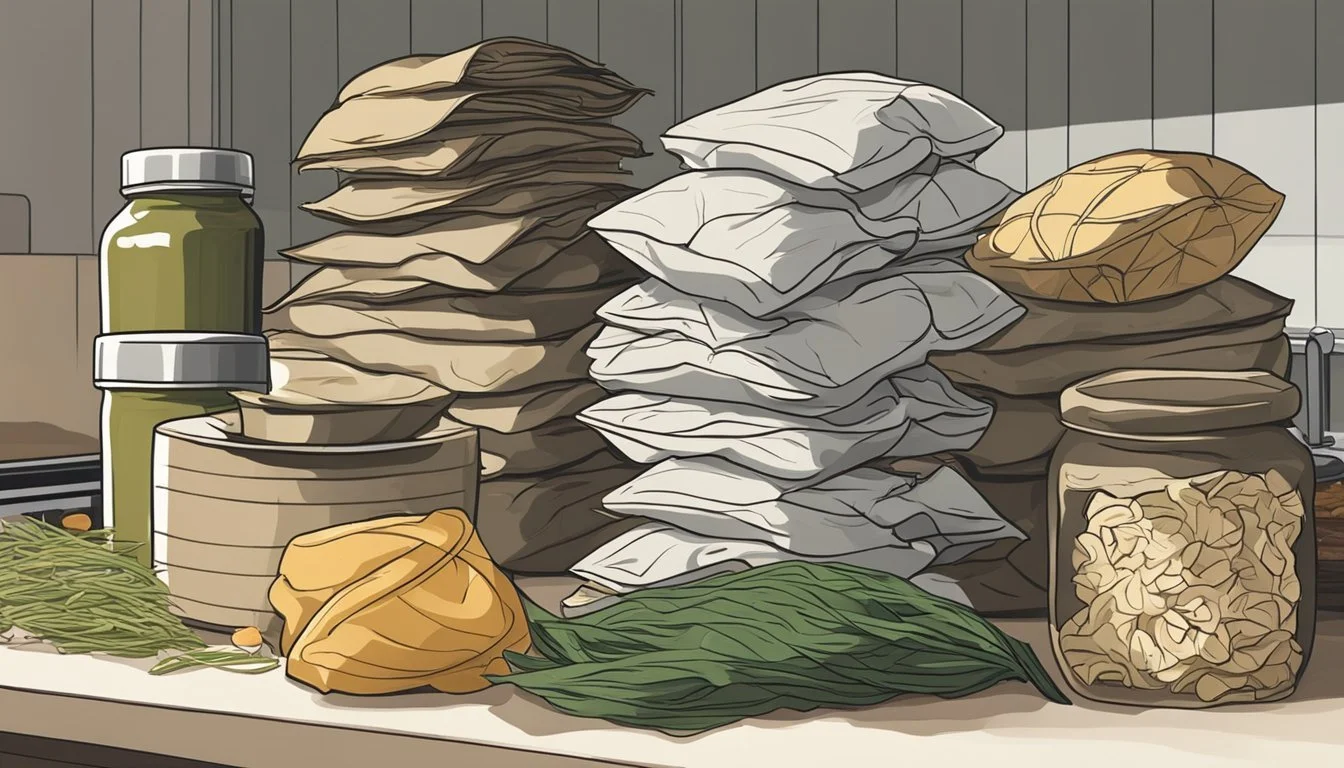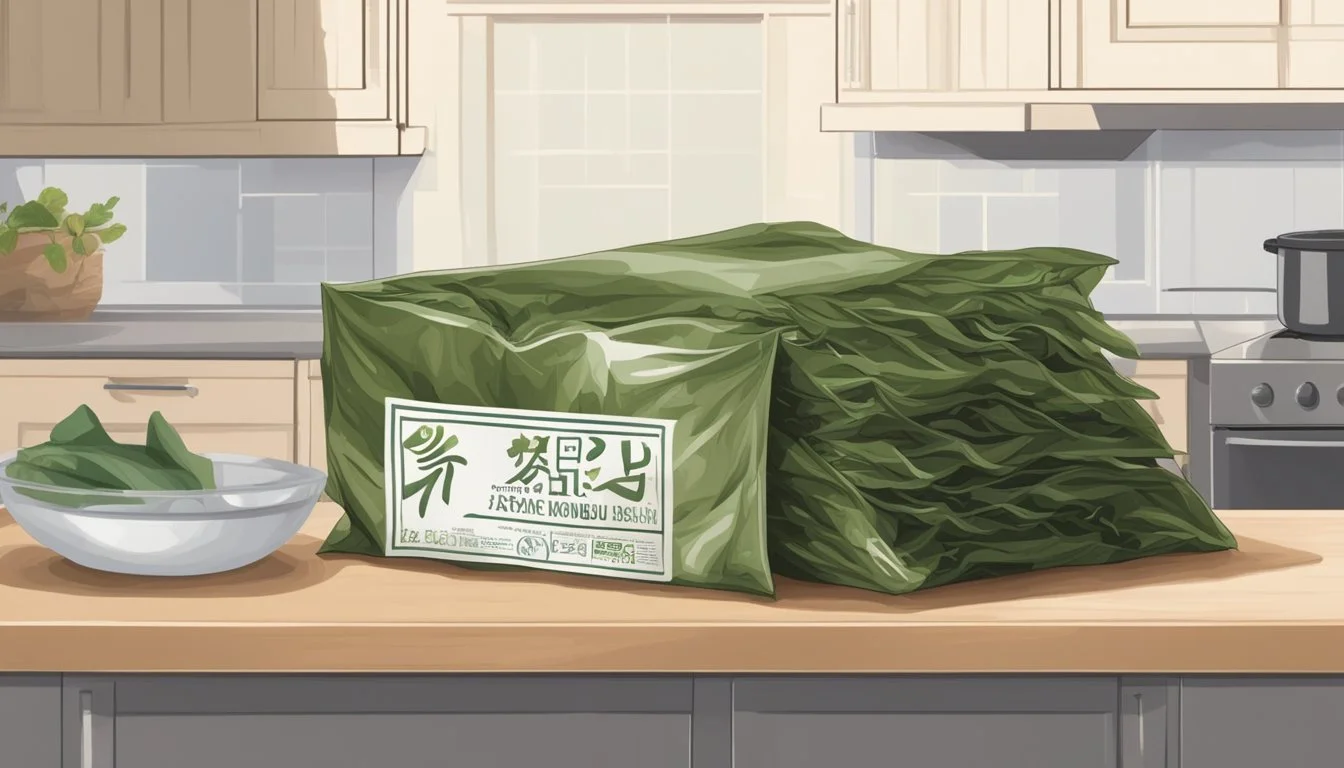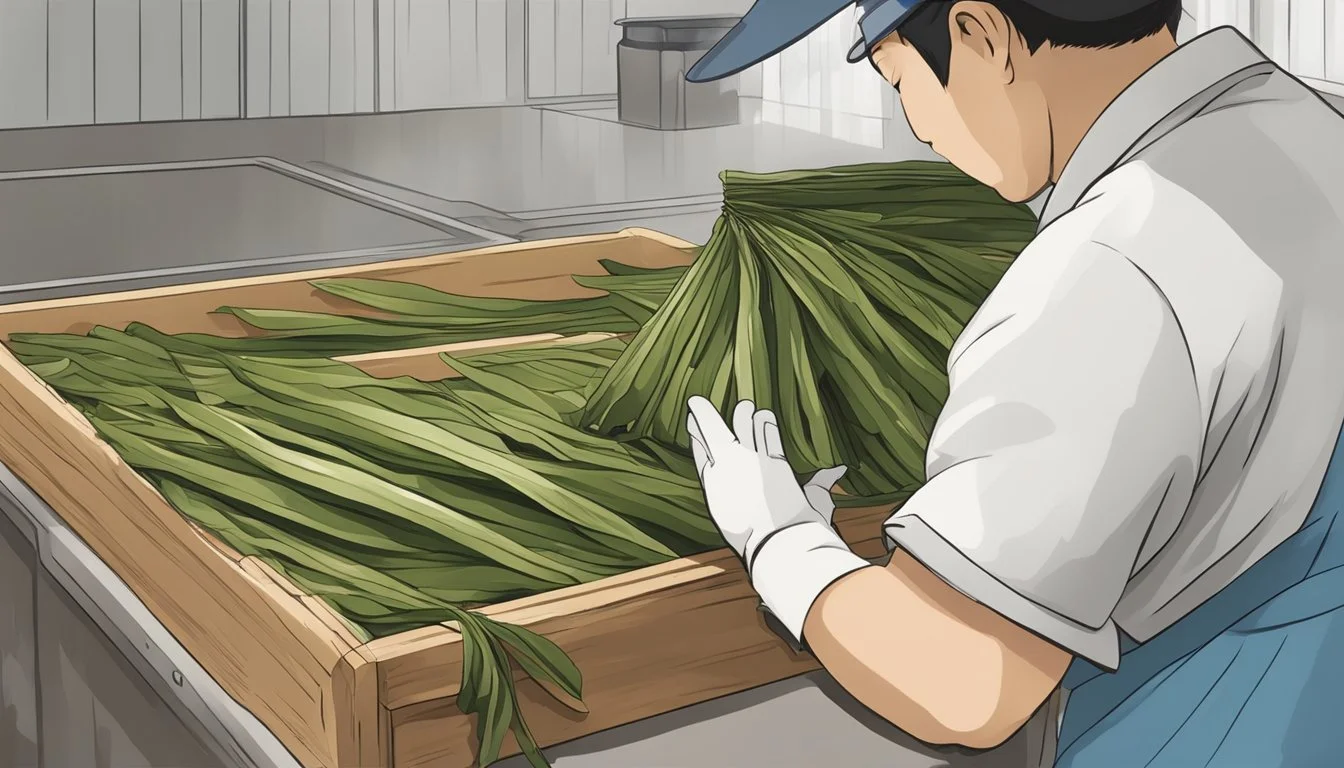Does Kombu Go Bad?
Tips on Shelf Life and Storage
Kombu, a widely used seaweed in Japanese cooking, is known for its rich umami flavor and health benefits. This essential ingredient in dashi broth and other traditional dishes often raises a critical question: does kombu go bad? The answer is yes, kombu can indeed go bad if not stored properly.
When stored in a cool, dry place away from direct sunlight, dried kombu can last up to a year. Moisture and air exposure can lead to spoilage, making it essential to keep kombu in an airtight container. For those leveraging kombu in their culinary exploits, understanding the shelf life and proper storage can ensure the seaweed retains its quality and flavor. Keep an eye out for changes in texture, smell, or appearance to determine if your kombu is still good to use.
Understanding Kombu
Kombu, an edible kelp, plays an essential role in Japanese cuisine due to its unique umami flavor and multiple health benefits. It is rich in minerals and used in various traditional dishes.
Historical Significance in Japanese Cuisine
Kombu has been a staple in Japanese cuisine for centuries. It is commonly used to prepare dashi, a fundamental broth in many Japanese recipes. The historical cultivation of kombu can be traced back to the Edo period, highlighting its long-standing importance. Its use was originally concentrated in the northern regions of Japan, particularly in Hokkaido, where the kelp farms still thrive today. Over time, kombu's presence spread nationwide, becoming integral to dishes like tsukudani, where it is simmered in soy sauce and seasonings.
Nutritional Benefits
Kombu is celebrated for its rich nutritional profile. It is a significant source of iodine, essential for thyroid function. Additionally, it provides calcium and magnesium, which support bone health and muscle function. It also contains dietary fiber, aiding in digestion and satiety. Minerals like iron and potassium further contribute to its health benefits. One of kombu's unique properties is its ability to enhance flavors through the natural occurrence of glutamic acid, a key component of the umami taste, making dishes more savory and satisfying.
Culinary Uses and Varieties
Kombu is versatile in the kitchen, adding depth to a variety of dishes. The most common use is in making dashi, a stock that forms the base for soups and sauces. Beyond dashi, kombu is also used in tsukudani, where it is cooked with soy sauce, sugar, and mirin. Different types of kombu, such as Rishiri, Ma, and Rausu, offer variations in flavor and texture, allowing for diverse culinary applications. Some varieties are softer and easy to slice for direct consumption, while others are better suited for broth preparation. Proper storage of dried kombu, in a cool, dry place using airtight containers, can extend its shelf life and maintain its quality.
Shelf Life and Spoilage
The shelf life of kombu depends on several factors, including storage conditions and handling. Poor storage can lead to spoilage, affecting its quality and safety.
Factors Affecting Kombu Freshness
Storage conditions play a significant role in kombu's longevity. Dried kombu can last up to a year when stored in a cool, dry place away from direct sunlight.
An airtight container helps prevent moisture and air exposure, reducing the risk of mold and bacteria growth. Proper handling also ensures that kombu retains its umami flavor and nutritional value.
Visual Signs of Spoilage
Kombu usually appears as dark green to brown strips. If it becomes discolored or develops visible spots of mold, it indicates spoilage.
Look out for texture changes, as fresh kombu is usually pliable. Stale kombu may become brittle or unusually soft, signaling it’s no longer good to use.
How to Detect Spoilage Through Smell and Texture
Spoiled kombu often emits an off-smell, which can be musty or sour. Fresh kombu, conversely, has a subtle oceanic scent.
By touching it, one can feel if the kombu is still firm and slightly pliable. A slimy texture usually indicates bacterial growth, making it unsafe for consumption.
Proper Storage Techniques for Kombu
To ensure kombu stays fresh and retains its quality, it's important to store it properly using various methods. These techniques help protect kombu from moisture and air, which can cause spoilage.
Storing in the Pantry and Refrigerator
Dried kombu can last up to a year when stored correctly in the pantry. It should be kept in a cool, dry place, away from direct sunlight. Using an airtight container is critical to prevent moisture and humidity from affecting the kombu.
For opened packages or more delicate kombu, consider refrigeration. Place kombu in a resealable bag and press out any excess air before sealing. This method helps maintain freshness and prevents exposure to ambient air and potential humidity.
Freezing Kombu for Extended Freshness
Freezing kombu is an excellent method for long-term storage. Properly sealed kombu can maintain its quality for several months to a year when frozen.
Place the kombu in a freezer-safe, resealable bag and remove all excess air before sealing. This minimizes the risk of freezer burn and protects the kombu from moisture and humidity. Label the bag with the date of storage to keep track of its freshness.
Vacuum Sealing and Other Preservation Methods
Vacuum sealing is one of the best practices for preserving kombu, especially when planning for extended storage. This method removes air from the packaging, significantly reducing the risk of moisture infiltration and oxidation.
To vacuum seal, place the kombu in a vacuum-seal bag and use a vacuum sealer to extract the air. This creates an airtight seal that extends the kombu's shelf life. Other preservation methods include using silica gel packets in the storage container to absorb excess moisture and maintain optimal storage conditions.
By following these storage techniques, you can keep kombu fresh and nutritious for an extended period.
Kombucha and Kombu: Understanding the Difference
Kombucha and kombu might sound similar, but they are vastly different products. Kombucha is a fermented tea known for its probiotics and effervescence, while kombu is dried seaweed frequently used in Japanese cuisine for its umami flavor.
The Unique Qualities of Fermented Drinks
Kombucha is a fermented tea made through a process involving tea, sugar, and a symbiotic culture of bacteria and yeast (SCOBY). The fermentation process gives kombucha its characteristic tart taste and slight effervescence.
Besides its refreshing flavor, kombucha is valued for its probiotic content, which is believed to support gut health. Unlike kombu, kombucha can contain trace amounts of alcohol due to fermentation. In the realm of fermented drinks, kombucha joins others like kefir, offering diverse health benefits and unique flavors.
Shelf Life and Quality Considerations for Fermented Tea
The shelf life of kombucha depends on whether it's homemade or store-bought. Unopened, store-bought kombucha typically lasts 1 to 2 months in the refrigerator. Once opened, it should be consumed within a week for optimal flavor and probiotic benefits. Kombucha's effervescence and tartness can intensify over time as fermentation continues.
For homemade kombucha, the shelf-life can vary based on brewing methods and storage conditions but usually ranges from several weeks to a few months in the fridge. Proper storage in airtight containers is crucial to maintain quality and prevent over-fermentation.
Recognizing Quality in Kombu
When assessing kombu, several factors indicate its quality and freshness. High-quality kombu typically presents a dark, almost black color with a slight sheen.
The texture should be firm and slightly flexible when dry. Overly brittle or discolored pieces may indicate aging or improper storage.
Flavor is a crucial aspect. Quality kombu should impart a rich umami flavor when used in cooking. When rehydrated, the taste should be savory with a subtle, ocean-like essence.
Pay attention to the aroma. Fresh kombu should have a mild, pleasant, sea-like smell. A strong or off-putting odor can be a sign of spoilage.
Inspect the kombu for any visible signs of spoilage, such as mold growth, unusual spots, or significant texture changes. These indicate that the kombu may no longer be suitable for consumption.
Proper storage helps maintain kombu's quality. Keep it in an airtight container, away from light and moisture. Stored correctly, dried kombu can last up to a year.
Checklist for Quality Kombu:
Dark, almost black color with slight sheen
Firm, slightly flexible texture when dry
Rich umami flavor when used
Mild, pleasant sea-like aroma
No mold growth or unusual spots
By keeping these factors in mind, one can ensure they are using high-quality kombu, leading to optimal flavor and culinary results.
Health Implications of Spoiled Kombu
Spoiled kombu can pose several health risks. Signs of spoilage include changes in texture, smell, or appearance.
Foodborne illnesses may result from consuming compromised kombu. Bacteria and mold can grow on kombu that is improperly stored or past its shelf life.
Symptoms of consuming spoiled kombu might include:
Stomach cramps
Nausea
Vomiting
Diarrhea
These symptoms can be particularly severe in individuals with compromised immune systems.
It is crucial to discard kombu if any signs of spoilage are present. Ensuring kombu is stored in a cool, dry place and in an airtight container can help maintain its quality and prevent health issues.
Always inspect kombu before use to avoid potential health risks.








